Chapter 21
BRINGING BRUNEL BACK DOWN TO SIZE
Modelling the Broad Gauge
One of the most popular hobbies over the past century has been railway modelling, and it continues to grow apace, with hundreds of splendid models available off-the-shelf, from market-leading manufacturers such as Hornby, Bachmann and Dapol.
However, the development of model railways from crude wind-up toys to beautifully detailed scale models is a 20th-century phenomenon, whereas broad gauge was born and killed off in the 19th.
Unlike standard-gauge types, no ready-to-run models are available at your local store. Therefore, if you would like a Brunel broad-gauge layout of your own for your bedroom, attic or garage, you must build it all yourself – from scratch.
Don’t despair; for there are experts on hand, not only to help you with practical advice, but also to supply you with a range of wonderfully crafted model kits.
The Broad Gauge Society was formed in 1980 by modellers with an interest in the Brunel system. Its aims are to provide practical and detailed information about modelling 7ft 0¼in gauge and establish essential supplies to kit builders.
A twice-yearly magazine, The Broadsheet, disseminates essential information to modellers and historians alike, with data sheets covering almost every example of rolling stock that ran on Brunel’s system.
The society has produced ranges of etched brass and white metal kits, in both 4mm and 7mm to 1ft scales – including the essential bridge rail in both scales, and many of them can be built by an enthusiastic, seasoned modeller with a medium skill level.
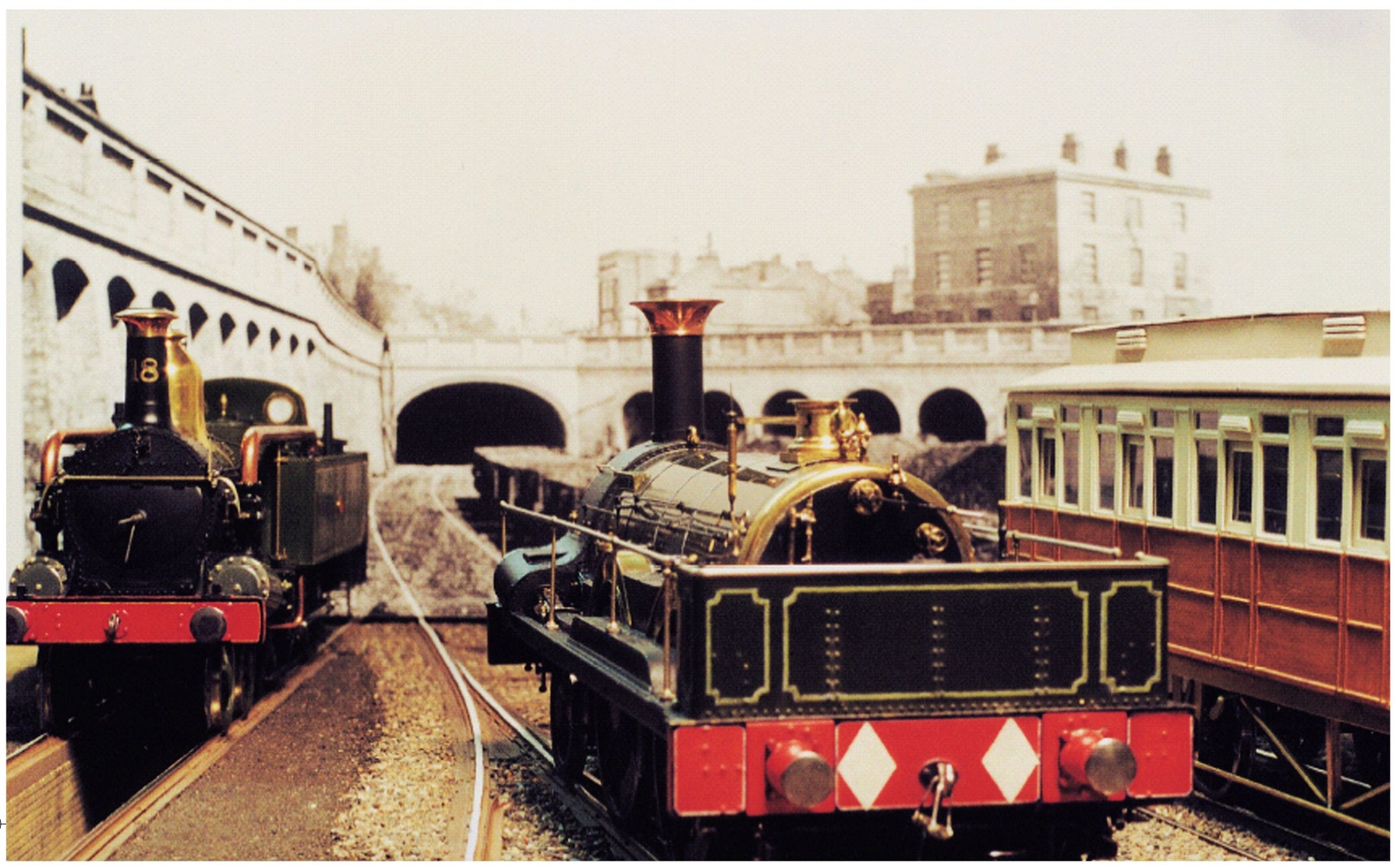
Modeller Paul Marchese’s superb 7mm scale layout of Edgware Road, shows just what can be achieved. It depicts the meeting between the GWR and Metropolitan Railway and features GWR broad-gauge 2-4-0T Locust, Metropolitan standard gauge 4-4-0T Hercules, and an unfinished carriage posed using a false back scene, which was a real photograph of Edgware Road before completion of the line.
An annual field trip to an area of broad gauge interest is held by the society, with a view to rediscovering artefacts from this great, often forgotten era of our railway heritage. Members are often amazed by how much still survives.
Of course, the biggest drawback to building any model railway layout is space, and this accounts for the popularity of the 2mm to the foot, or N gauge, over the past 30 years.
If you want to build a Brunel layout in 4mm scale (O gauge), you need track with rails 28mm wide – almost as big as O gauge (7mm) that has 32mm track.
If you opt for O scale, you need track with railways 50mm apart. But where do those graceful, wide curves go, and who has the space available?
Nonetheless, a surprising number of modellers do try their hand at broad gauge, often with hugely satisfying results. Occasionally, their layouts can be seen at model exhibitions.
The society’s locomotive, carriage and wagon kits largely cover the later broad-gauge period, post-1860, but if do you want to go back to the earlier decades, you will have to go back to the time-honoured modelling basics, and scratch build, using plastic, card and balsa wood, although the society can still help you in a big way, by supplying wheels, axle boxes, buffers and other castings.

An Armstrong convertible 0-6-0 tender engine, built by Alan Garner from a Scorpio Models kit.
Broad-gauge aficionado Brian Arman built this superb model of Plato from the society’s kit for a Banking Class 0-6-0ST of 1852/4.

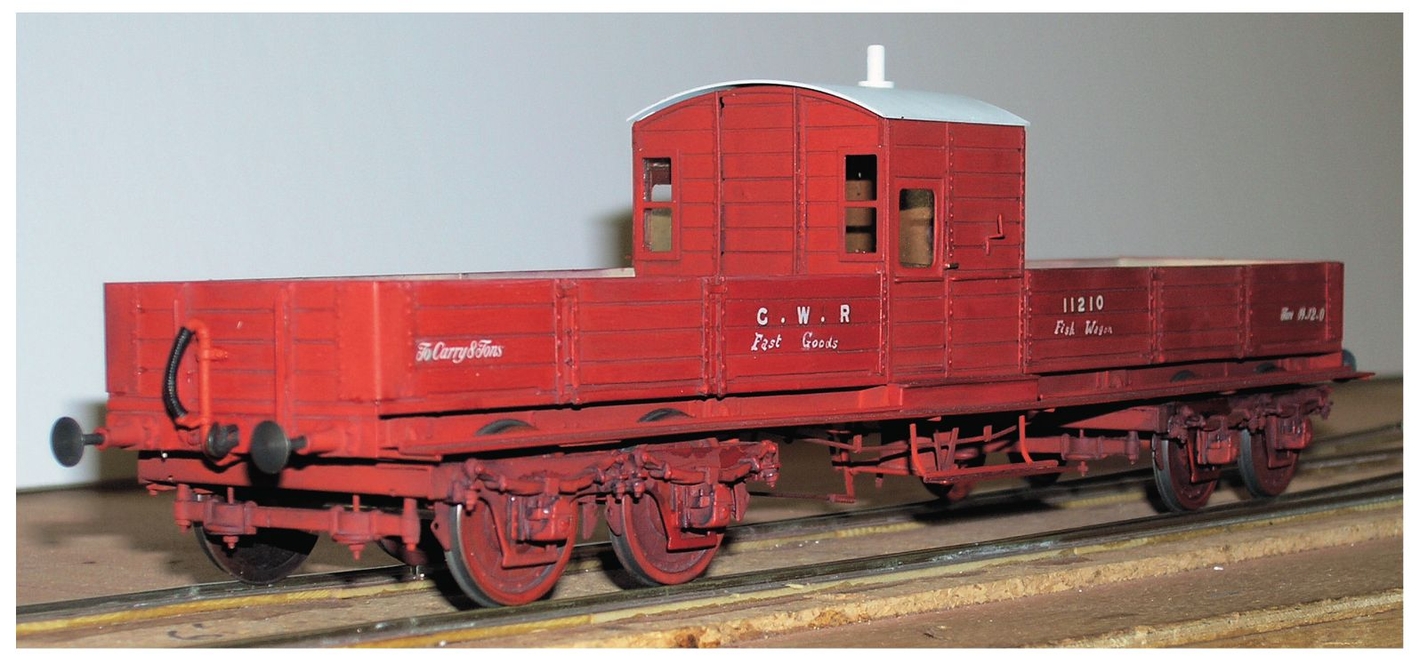
The West Country fish trade became important towards the end of the broad-gauge era and seven of these impressive bogie fish trucks were built in 1889 to cater for the expanding traffic. The unusual design showcases the major differences between standard gauge and the Brunel broad gauge, which was in a way, a different form of transport all of its own. This model is built from a Broad Gauge Society kit.
Several makers of parts for OO and O gauge kit builders now also supply some components for post-1860, broad-gauge models.
The big advantage with this later period of the Brunel system is that as the cut-off date of 1892 for the 7ft 0¼in gauge approached, Swindon Works turned out more locomotive carriage and wagon designs and components, which could be converted to narrow gauge when necessary.
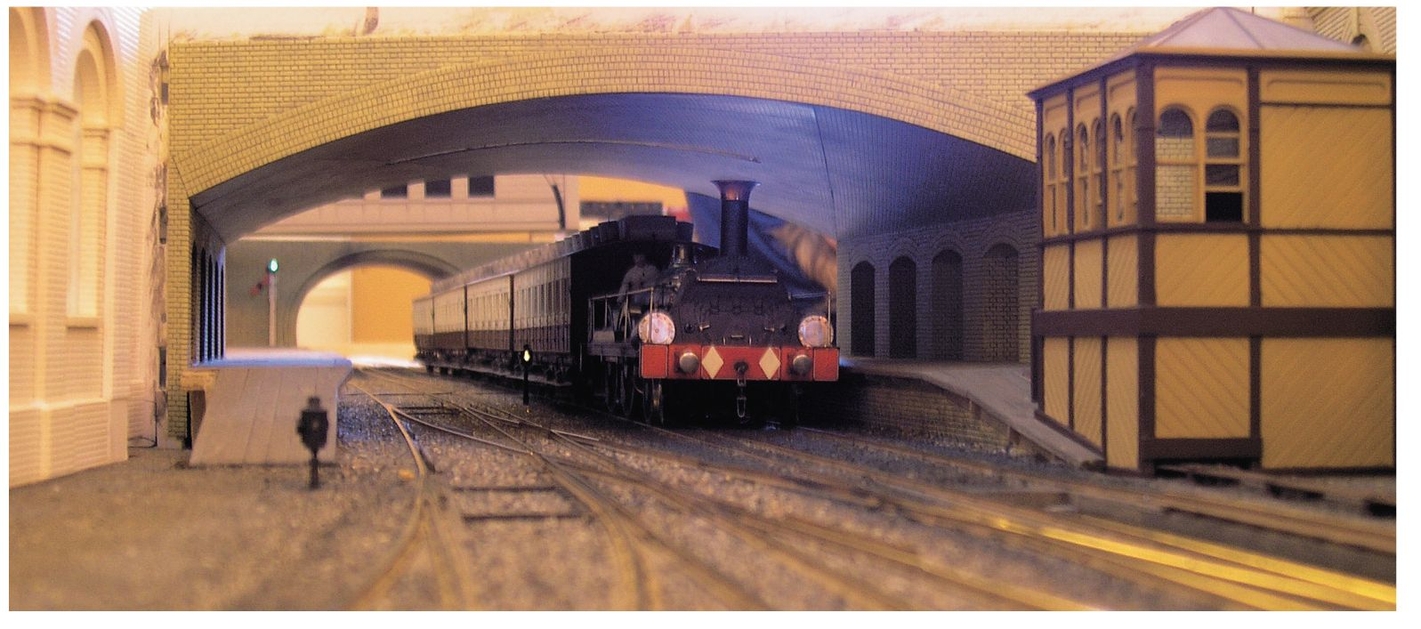
A low-level shot of the Edgware Road layout.
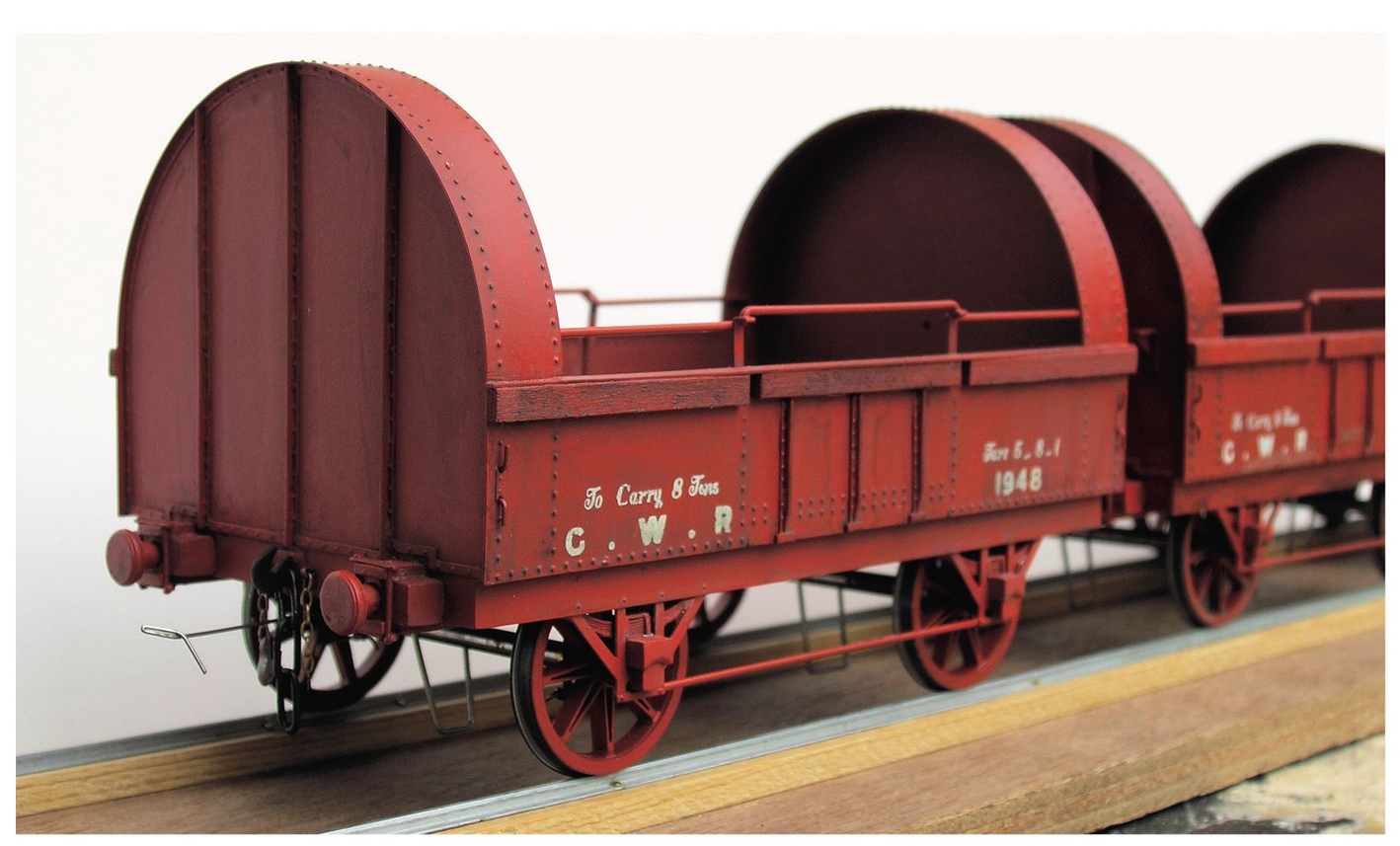
The bonnet-ended tilt wagons were a distinctive part of the Brunel broad-gauge scene from the earliest days and many lasted until the end in 1892. Society member Alan Garner built this model of an iron-tilt wagon from a Victorian Models kit.
Some of these coaches took only half an hour to convert to 4ft 8½in gauge and ran on the GWR for many years afterwards.
Therefore, the door is wide open for the modeller to ‘back convert’ proprietary standard-gauge kits, from specialist makers to represent broad gauge in an authentic manner. Again, the society supplies suitable ‘wide ends’ for such tabletop, modern-day coach conversions.
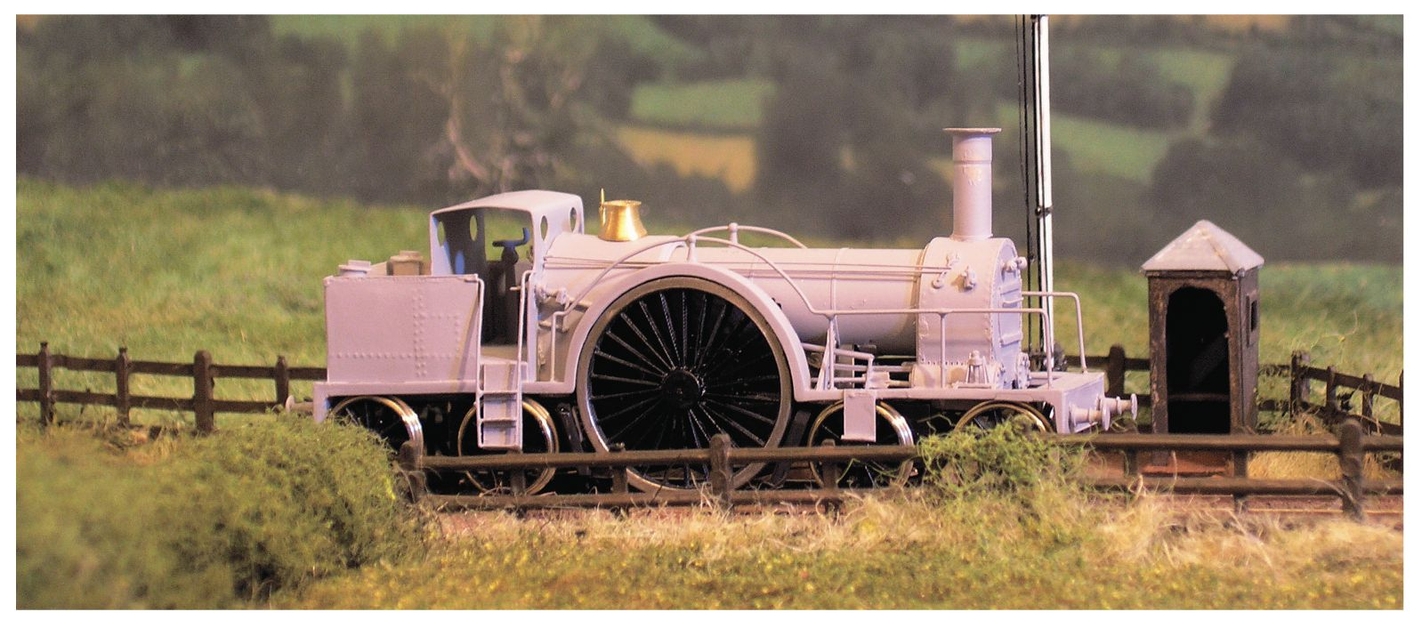
Broad Gauge Society member Nick Saltzman models Brunel’s broad gauge in 3mm scale, made popular by Tri-ang TT (tabletop) gauge in the 1950s. This unpainted model of a Bristol & Exeter Railway 4-2-4WT was built from scratch and is seen running on his exhibition layout, Bagborough West.
Modelling the later period of broad gauge is helped greatly by the huge amount of quality photographs that were taken on glass plates, recording very fine detail. By contrast, many of the sketches of the Brunel system in its infancy may have great artistic merit but in terms of scale and technical usefulness, are non-starters.
Track building, however, presents the biggest problem – and with broad gauge, you will have to build it yourself – it is the exact opposite of opening that OO gauge Christmas present and having it running around the lounge within minutes.
If you have the skill, you could even try mixed gauge, which opens up a wealth of possibilities.
Models can never be a substitute for the prototype in preservation, but as virtually everything was lost after 1892 in terms of track, engines and rolling stock, it is the best we can do. As you can see from the magnificent recreations on these pages, building your own Brunel system can be hugely rewarding.
The Broad Gauge Society, which provided the photographs on these pages, can be contacted via membership secretary, Hugh Smith, 31b, Carnarvon Road, Stratford, London, E15 4JW, email: hugh.slimgit@talk21.com
It can provide details of other specialist manufacturers of broad-gauge products and components. Its website is www.broadgauge.org.uk